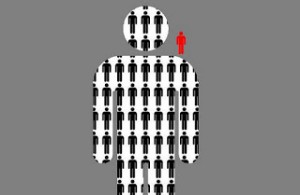
The following are some of the people who have participated in 2012 and 2014 in the conferences at MIT on collective intelligence.
(For official information about the conferences, click for CI 2014, or CI 2012. WiserWorldWeb.org in no way represents the conferences, and has gathered the information below from various sources.)
Together these researchers constitute a community whose collective work has important ramifications for how well humanity is able to address its problems in the future. They are listed here as a resource, not as members of the wiserworldweb.org social network. Where possible, links are given to the person’s home page, to papers on arXiv, and to the presentation and paper given at a CI conference. The title of the paper given at a CI conference is in italics. People are listed alphabetically. “IT” means an Invited Talk. “PL” means PLenary paper. “P” means Poster. This information is taken directly from the following sites: http://collective.mech.northwestern.edu/?page_id=24 , http://cci.mit.edu/ci2012/plenaries/index.html , and http://arxiv.org/abs/1204.2991 as well as homepages and links on the Internet.
- Lada Adamic (Michigan)
o rXiv: http://arxiv.org/find/all/1/all:+AND+Lada+Adamic/0/1/0/all/0/1
- Linda Argote, Organizational Behavior and Theory @ Carnegie Mellon
- Video of CI2014 presentation: Transactive Memory Systems and Collective Intelligence
- “Transactive Memory Systems: Micro Foundations of Dynamic Capabilities”
Journal of Management Studies 49(8), 2012; 1375-1382.
(with: Yuqing Ren)- Paraphrase of part of abstract: Transactive Memory is a microfoundation of an organization’s dynamic capability [to reconfigure for changing environments]… A system to collectively encode, store and retrieve knowledge can facilitate the combinative integration and renovation of an organization’s knowledge assets.
- Yochai Benkler (Harvard)
- The Wealth of Networks: How Social Production Transforms Markets and Freedom Yale, 2007.

- “Benkler describes how patterns of information, knowledge, and cultural production are changing—and shows that the way information and knowledge are made available can either limit or enlarge the ways people can create and express themselves. He describes the range of legal and policy choices that confront us and maintains that there is much to be gained—or lost—by the decisions we make today.”
- The Penguin and the Leviathan: How Cooperation Triumphs Over Self-Interest. Crown, 2011.
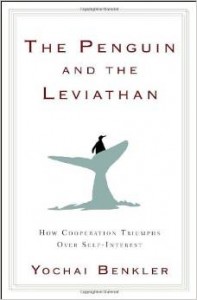 “Harvard University Professor Yochai Benkler draws on cutting-edge findings from neuroscience, economics, sociology, evolutionary biology, political science, and a wealth of real world examples to debunk this long-held myth [that humans are only selfish] and reveal how we can harness the power of human cooperation to improve business processes, design smarter technology, reform our economic systems, maximize volunteer contributions to science, reduce crime, improve the efficacy of civic movements, and more. “
“Harvard University Professor Yochai Benkler draws on cutting-edge findings from neuroscience, economics, sociology, evolutionary biology, political science, and a wealth of real world examples to debunk this long-held myth [that humans are only selfish] and reveal how we can harness the power of human cooperation to improve business processes, design smarter technology, reform our economic systems, maximize volunteer contributions to science, reduce crime, improve the efficacy of civic movements, and more. “ - Legitimacy in Cooperative Human Systems Design: Mediating Power, Structure, and Motivational Misalignment,
- The Wealth of Networks: How Social Production Transforms Markets and Freedom Yale, 2007.
- Margarete Boos Courant Research Centre Evolution of Social Behaviour, University of Göttingen
o Leadership in Moving Human Groups. CI 2014.
Abstract and paper. Public Library of Science, PLOS.
- “We showed that in a human group – on the basis of movement alone – a minority can successfully lead a majority. Minorities lead successfully when (a) their members choose similar initial steps towards their goal field and (b) they are among the first in the whole group to make a move. Using our approach, we empirically demonstrate that the rules of swarming behaviour apply to humans. Even complex human behaviour, such as leadership and directed group movement, follow simple rules that are based on visual perception of local movement.”
o CI 2014, PT, Weds. 11:15: Collective response to perturbations in a data-driven fish school model . (at Research Gate)
- “Our study, mostly limited to groups of moderate size (in the order of 100 individuals), focused not only on the transition to schooling induced by increasing the swimming speed, but also on the conditions under which a school can exhibit milling dynamics and the corresponding behavioral transitions. “
- https://www.youtube.com/watch?v=HJdJb2oZozo
- Abstract and video
Colin Camerer (Caltech)
- A behavioral economist studying the psychological and neural bases of choice and strategic decision-making.
- When Rational Choice Erases or Magnifies Boundedly-Rational Choices in Economics: Evidence from LUPI Lottery Games and Price Bubble Experiments (paper CollectiveIntelligence/2012/plenary/3 )
- Abstract Video
- Behavioral Game Theory, is available at Princeton University Press.
Christopher Chabris (Union College) @cfchabris
- PL, 2014, Weds @ 11:15: Theory of Mind Predicts Collective Intelligence CI 2014.
- Aristotle’s Hypothesis and the Relationship Between Individual Intelligence and Collective Intelligence
o (paper CollectiveIntelligence/2012/plenary/4 )
Yiling Chen (Harvard)
- Mechanism Design for Prediction Markets
- Elizabeth Churchill (Yahoo! Research)
Perspectives on Intelligence from Within and Outside the Collective
(paper CollectiveIntelligence/2012/plenary/6 ) Slides
Books
- F. Ritter, G. Baxter and E. Churchill. The ABCs of Human Centered Design. To be published, Springer
- K. O’Hara, M. Perry, E.F. Churchill and D. Russell. (Eds) Public and Situated Displays. Kluwer Academic Publishers, 2003
- D. Snowdon, E. F. Churchill and E. Frecon (Eds) Inhabited Information Spaces. Springer Verlag, 2003.
- Y.Ye and E.F. Churchill (Eds) Agent Supported Cooperative Work. Mass ,USA: Kluwer Academic Publishers, 2003
- E.F. Churchill, D. Snowdon and A. Munro (Eds). Collaborative Virtual Environments. Digital Places and Spaces for Interaction. London, UK: Springer Verlag, 2001
- J. Cassell, J. Sullivan, S. Prevost, and E. Churchill (Eds.). Embodied Conversational Agents. Cambridge, MA: MIT Press, 2000
Journal Papers
- de Sá, M. Shamma, David A. and Churchill, Elizabeth F. (2013), Live mobile collaboration for video production: design, guidelines, and requirements. Personal and Ubiquitous Computing, Jan 1, 2013, Springer.
Iain Couzin (Princeton)
o For video clips and a zestful podcast go to http://www.wellcomecollection.org/whats-on/events/exchanges-at-the-frontier-20-1/iain-couzin.aspx .
o Collective Intelligence in Animal Groups Abstract Video
o Groups of 5-20 optimize decisions, heading cues most people don’t notice:
- http://rspb.royalsocietypublishing.org/content/281/1784/20133305.abstract
- http://blogs.princeton.edu/research/2014/04/23/too-many-chefs-smaller-groups-exhibit-more-accurate-decision-making-proceedings-of-the-royal-society-b/
-
SELECTED RECENT LAB PUBLICATIONS
- Strandburg-Peshkin, A., Twomey, C.R., Bode, N.W., Kao, A.B., Katz, Y., Ioannou, C.C., Rosenthal, S.B., Torney, C.J., Wu, H., Levin, S.A. & Couzin, I.D. (2013) Visual sensory networks and effective information transfer in animal groups, Current Biology23(17), R709-711.
- Miller, N., Garnier, S. & Couzin, I.D. (2013)Both information and social cohesion determine collective decisions in animal groups, PNAS 110(13), 5263-5268.
- Berdahl, A., Torney, C.J., Ioannou, C.C., Faria, J. & Couzin, I.D. (2013) Emergent sensing of complex environments by mobile animal groups Science 339, 574-576. FREE ACCESS from our main publications page.
- Ioannou, C.C., Guttal, V. & Couzin, I.D. (2012) Predatory fish select for coordinated collective motion in virtual prey. Science 337(6099), 1212-1215. FREE ACCESS from our main publications page.
- Guttal, V., Romanczuk, P., Simpson, S.J., Sword, G.A. & Couzin, I.D. (2012) Cannibalism as a driver of the evolution of behavioral phase polyphenism in locusts. Ecology Letters 15, 1158-1166.
- Handegard, N.O., Boswell, K.M., Ioannou, C.C., Leblanc, S.P., Tjøstheim, D.B. & Couzin, I.D. (2012) The dynamics of coordinated group hunting and collective information-transfer among schooling prey. Current Biology 22(13), 1213-1217.
- Gallup, A.C., Hale, J.J., Garnier, S., Sumpter, D.J.T., Kacelnik, A., Krebs, J. & Couzin, I.D. (2012) Visual attention and the acquisition of information in human crowds.PNAS 109(9), 7245-7250. open access.
- Leonard, N.E., Shen, T., Nabet, B., Scardovi, L., Couzin, I.D & Levin, S.A. (2012) Decision versus compromise for animal groups in motion. PNAS 109(1), 227-232.
- PL, 2014, Weds @ 11:15: Corporate prediction markets: evidence from Google, Ford, and firm X
- With Wolfers and Zitzewitz
- “Newly hired employees are on the optimistic side of these markets, and optimistic biases are significantly more pronounced on days when Google stock is appreciating. We find strong correlations in trading for those who sit within a few feet of one another; social networks and work relationships also play a secondary explanatory role. “
-
"Press discussion: New York Times (html), FT Magazine(html), InfoWorld (html). A digestable summary via the Freakonomics blog. Revision requested by Review of Economic Studies.
Clintin P. Davis-Stober , Psychology, University of Missouri
When is a crowd wise? CI 2014. Article in Decision. Abstract “A crowd is wise if a linear aggregate, for example a mean, of its members’ judgments is closer to the target value than a randomly, but not necessarily uniformly, sampled member of the crowd. . . . Even if judgments are biased and correlated, one would need to nearly deterministically select only a highly skilled judge before an individual’s judgment could be expected to be more accurate than a simple averaging of the crowd. . . . Crowd wisdom is maximized when judgments systematically differ as much as possible. “
o IT, 2014, Weds @ 11:15: Theory of Mind Predicts Collective Intelligence CI 2014.
- Emily Falk, Communications @ University of Pennsylvania
- IT, 2014, Weds @ 2: Neural predictors of individual and large scale behavior change
- Henry Farrell, Political Science and International Affairs @ George Washington
- IT, 2014, Weds @ 2:
- Nicolas Fay, Psychology, University of Western Australia.
o Human Communication Systems Evolve by Cultural Selection. CI 2014.
- Abstract and paper. PLOS. The Cultural Evolution of Human Communication Systems in Different Sized Populations: Usability Trumps Learnability
- Human communication systems evolve to be usable. . . . Dramatic sign simplification (between interacting agents) makes the signs easier to bring to mind and plan, quicker to execute and improves sign reproduction fidelity for the next generation of users. This simplification and abstraction process also makes the signs difficult to understand. Thus, usability trumps learnability.
- Andrew Gelman
- o IT, 2014, Weds @ 11:15: The Mythical Swing Voter
- David Gibson, Sociology @ Notre Dame
- Sharad Goel
- IT, 2014, Weds @ 11:15: The Mythical Swing Voter
o Deborah Gordon (Stanford)
The Regulation of Foraging in Ant Colonies Abstract
- Julia Katherine Haines , University of California, Irvine
o Leveraging Diversity in Intercultural Creative Teams
- “While overall diversity had a negative net effect on outcomes, I found a significant relationship between a task-orientation that embraces conflict and a positive product outcome.”
- Ed Hutchins (UCSD) Cultural Practices, Emergent Pattens, and Collective Intelligence Abstract Video
o (paper CollectiveIntelligence/2012/plenary/9 )
- Panos Ipeirotis (New York University)
o Crowdsourcing: Quality Management and Scalability Abstract Slides Video
- Lisa Jing
- IT, 2014, Weds @ 11:15: Theory of Mind Predicts Collective Intelligence CI 2014.
- Niki Kittur, Human Computer Interaction Institute @ Carnegie Mellon
- IT, 2014, Weds @ 2:
- Jens Krause, Biology and Ecology of Fish @ Humboldt University Berlin
- IT, 2014, Weds @ 9: I
- Robert Kraut (Carnegie Mellon)
- Karim Lakhani, Business Administration @ Harvard
- Helene Landemore, Political Science @ Yale
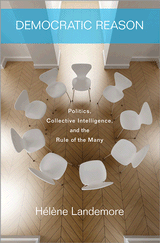
- Studying democratic innovations in post-representative democracy, as in a crowdsourced legislative process in Finland.
- Democratic Reason: Politics, Collective Intelligence, and the Rule of the Many, 2012
- Collective Wisdom: Principles and Mechanisms, 2012, with Jon Elster, as editors
- IT, 2014, Th. @ 9: The Politics of Collective Intelligence
- Naomi Leonard, Mechanical and Aerospace Engineering @ Princeton
- IT, 2014, Weds @ 9: Leadership and Collective Decision-making
- Sheen Levine, Columbia, Institute for Social and Economic Research and Policy
o Ethnic Diversity Deflates Price Bubbles
- Globe and Mailinterview:
- We created an experimental market to which participants came and traded assets for real money. We isolated them from each other so they could not pressure each other into conformity, but we assigned them such that some participants were in markets that were completely homogeneous, which means that all of the traders were from the same ethnicity. Some of the other markets, we inserted people of other ethnicities. And what we found was a marked difference in how well the markets performed. Markets that were composed of people of the same ethnicity, homogeneous markets, were much more likely to bubble than markets that were diverse.
o Towards A Grounded Theory of Collective Open Source Innovation
- “To account for the survival and effectiveness of these collectives, we offer a four-legged framework that draws on research in economic sociology and behavioral economics.”
- Thomas Malone
-

- The information below is from the Homepage at CCI:
- Thomas W. Malone is the Patrick J. McGovern Professor of Management at the MIT Sloan School of Management and the founding director of the MIT Center for Collective Intelligence. He was also the founder and director of the MIT Center for Coordination Science and one of the two founding co-directors of the MIT Initiative on “Inventing the Organizations of the 21st Century.” Professor Malone teaches classes on organizational design, information technology, and leadership, and his research focuses on how work can be organized in new ways to take advantage of the possibilities provided by information technology.
- The Collective Intelligence Handbook [tentative title], Thomas W. Malone and Michael S. Bernstein (Editors). For members of the CI community. Look at and comment on drafts of chapters.
- Woolley, A.W., Chabris, C.F., Pentland, A., Hashmi, N., & Malone, T.W. Evidence for a Collective Intelligence Factor in the Performance of Human Groups September 30, 2010 (10.1126/science.1193147)
- Malone, T.W., Laubacher, R., & Dellarocas, C., The Collective Intelligence Genome, Sloan Management Review, Spring 2010, 5, 3, 21-31 (Reprint No. 51303).
- Introne, J., Laubacher, R., Olson, G. & Malone, T. The Climate CoLab: Large Scale Model-based Collaborative Planning. Proceedings of the International Conference on Collaboration Technologies and Systems (CTS 2011), Philadelphia, PA, May 23-27, 2011 (Winner of Outstanding Paper Award).
- Thomas W. Malone; Anita Williams Woolley, Defend Your Research: What Makes a Team Smarter? More Women, Harvard Business Review, 89 (6): 32-33, June 2011.
- Bernstein, A., Klein, M., & Malone, T. W. Programming the global brain. Communications of the ACM, May 2012, 55 (5): 41-43.
- Videos:
- Why Women Make Teams Smarter” Presentation by Thomas W. Malone, Strategy and Business, May 15, 2014.
- “The Climate CoLab: Crowdsourcing solutions to climate change.” Presentation by Thomas W. Malone, WGBH Innovation IdeaLab, Boston, MA, November 21, 2013.
- “Why interpersonal skills are more important than you think.” Presentation by Thomas W. Malone, Techonomy Conference, Tucson, AZ, November 13, 2013.
- “Humans, Machines, and the New Collective Intelligence.” Invited plenary speaker, IBM Research Colloquium on “The New Era of Computing: Cognitive Systems,” Yorktown Heights, NY, October 2, 2013.
- Press:
- Grist, Climate CoLab thinks you could be the one to fix global warming, May 28, 2014Strategy and Business, Thomas Malone on Building Smarter Teams (article), (Podcast), May 12, 2014Discovery News, Contests Harness Crwod Smarts to Tackle Climate Change, May 6, 2014Populart Science, Why MIT Thinks You (Yes, You!) can Solve Climate Change, May 2, 2014The Guardian, Crowdsourcing climate change, one contest at a time, April 2014The White House, Climate CoLab featured by President’s Climate Data Initiative, March 2014Climate CoLab, George Shultz, Bob Inglis and Phil Sharp advise MIT Climate CoLab on carbon policy contest, March 2014PBS NOVA Next, How Millions of People Can Help Solve Climate Change, January 2014thepsychreport, MIT Crowdsources the Next Great (free) IQ Test, January 2014
Winter Mason (Stevens Institute of Technology) Group Identity, Culture, and Collective IntelligenceAbstract Slides Video
Jason Matheny, Open Source Indicators Program
IT, 2014, Weds @ 2:
- David Mendonca, Industrial and Systems Engineering @ RPI
IT, 2014, Weds @ 2:
- Barbara Mellers, Psychology @ University of Pennsylvania
IT, 2014, Weds @ 2:
- Rob Miller (MIT) Crowd Computing and Human Computation AlgorithmsAbstract SlidesVideo
- Radhika Nagpal, Computer Science @ Harvard
IT, 2014, Weds @ 9: Towards Collective AI
- Beth Noveck, Wagner School of Public Service @ NYU, Founder & Director of the Governance Lab
IT, 2014, Weds @ 2:
- Scott Page (Michigan) A Tale of Two Models of Collective Accuracy: Generated and Interpreted SignalsAbstract Slides Video
- Van Parunak, Chief Scientist @ Soar Technology
- Stephen Pratt, School of Life Sciences @ Arizona State
IT, 2014, Weds @ 9: Collective Cognition by Insect Societies
- Doug Rivers
o IT, 2014, Weds @ 11:15: The Mythical Swing Voter
- David Rothschild, Microsoft Research, NY. CV
o IT, 2014, Weds @ 11:15: The Mythical Swing Voter
- Swings in election poll numbers are due to slumps in the response rates of supporters of the reportedly slumping candidate.
- Matthew Salganik (Princeton) Introduction to Wiki Surveys Abstract Slides Video
- Ben Schneiderman (Maryland)
- Managing the Social Dynamics of Collective Intelligence Abstract Slides Video Photos from the CI2012
- Paul Schumacher
- CI 2014. (at Research Gate)For
- Betsy Sparrow, Psychology @ Columbia
- IT, 2014, Weds @ 2:
- Kate Starbird, Human Centered Design & Engineering @ University of Washington
- IT, 2014, Weds @ 2:
- Lyle Ungar, Computer & Information Science @ University of Pennsylvania
- IT, Weds, 4:15: How to aggregate opinions for crowd-based forecasting.
- IT, Weds, 4:15: How to aggregate opinions for crowd-based forecasting.
- Luis von Ahn, Computer Science @ Carnegie Mellon, Founder of reCAPTCHA & duolingo
-
I build systems that combine humans and computers to solve large-scale problems that neither can solve alone. I call this Human Computation, but others sometimes call it Crowdsourcing. Some of my past projects include: CAPTCHA, The ESP Game (acquired by Google), GWAP, and reCAPTCHA (acquired by Google).
I’m currently working on Duolingo. (Talk on TED.com)
To find out more about me, you can: watch my NOVA special, read my Wikipedia page, watch my talk at the Library of Congress, watch my Google Tech Talk, read my Wired feature, or simply search for my name on the Web. Here’s my CV, and here are some of my papers.
- IT, 2014: Duolingo: Free language education through crowdsourcing
-
Homepage: “I build systems that combine humans and computers to solve large-scale problems that neither can solve alone. I call this Human Computation, but others sometimes call it Crowdsourcing. Some of my past projects include: CAPTCHA, The ESP Game (acquired by Google), GWAP, and reCAPTCHA (acquired by Google).
I’m currently working on Duolingo. (Talk on TED.com)
To find out more about me, you can: watch my NOVA special, read my Wikipedia page, watch my talk at the Library of Congress, watch my Google Tech Talk, read my Wired feature, or simply search for my name on the Web. Here’s my CV, and here are some of my papers.”
-
- Duncan Watts, principal researcher at Microsoft Research.
- Everything Is Obvious: How Common Sense Fails Us,Crown, 2011. Some points:
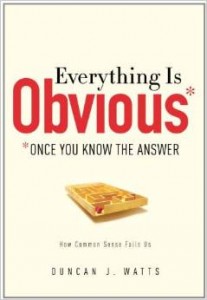
- Beware of errors in mental models of individual and collective behavior.
- Avoid circular reasoning.
- Use the possibilities of the data on social networks for scientific study of behavior.
- Everything Is Obvious: How Common Sense Fails Us,Crown, 2011. Some points:
- Justin Wolfers (Michigan) Forecasting Elections: Voter Intentions versus Expectations Abstract Video
- Anita Woolley (Carneigie Mellon)
- Johnathan Zittrain (Harvard)
Eric Zitzewitz
- o IT, 2014, Weds @ 11:15: Corporate prediction markets: evidence from Google, Ford, and firm X
[/vc_column_text][/vc_column][/vc_row]
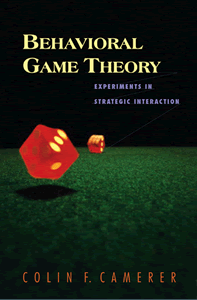
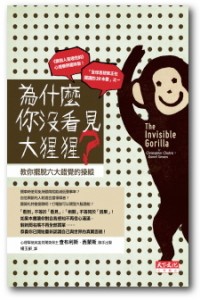
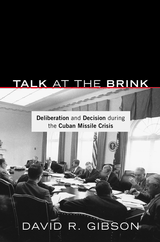
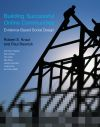 based social design.
based social design.